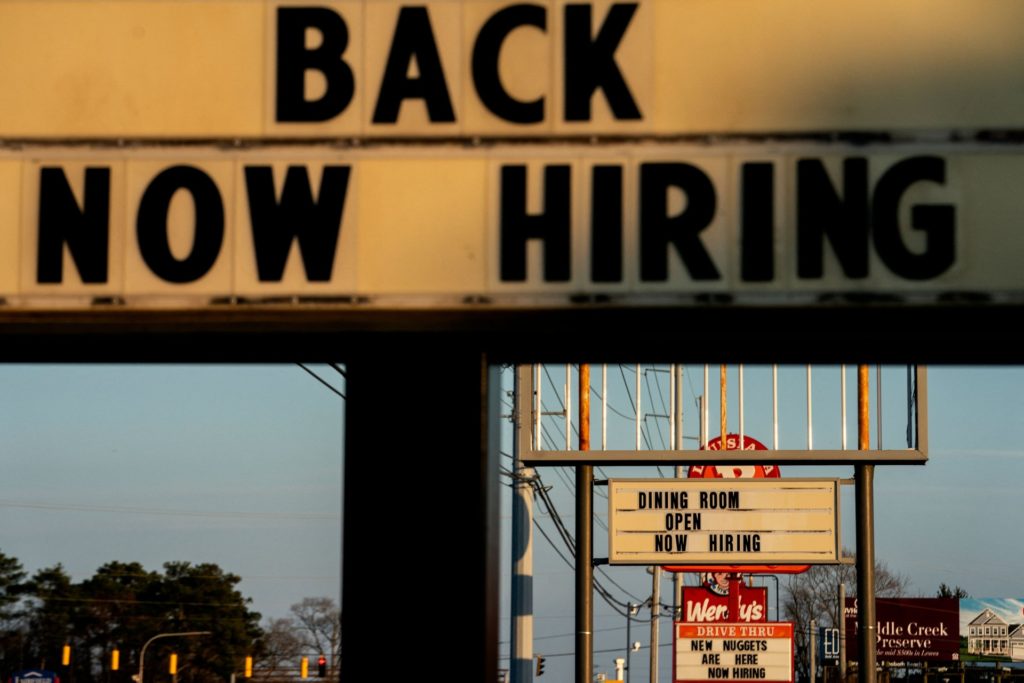



The U.S. economy added 428,000 jobs in April and the unemployment rate held steady at 3.6 percent, the Department of Labor said Friday.
Economists had expected the economy to add 400,000 jobs and the unemployment rate to come in unchanged from the prior month at 3.6 percent. The range of forecasts by economists surveyed by Econoday was between a gain of 300,000 to a gain of 500,000.
The labor force participation rate unexpectedly declined to 62.2 percent from 62.4 percent.
Average hourly earnings for all employees on private nonfarm payrolls rose by 10 cents, or 0.3 percent, to $31.85 in April. Over the past 12 months, average hourly earnings are up 5.5 percent. In April, average hourly earnings of private sector production and nonsupervisory employees rose by 10 cents, or 0.4 percent, to $27.12. This represents a deceleration of wage gains from the 0.4 percent overall recorded in March, likely due to many of the jobs added in April being on the lower end of the wage scale.
The economy added jobs at a breakneck pace in the first three months of the year despite the economy contracting 1.4 percent. Employers brought on nearly 1.7 million new workers in the first quarter, an average of 562,000 a month. At the end of March, there were a record 11.5 million job openings and a record 4.5 million workers voluntarily left their jobs, usually a sign that they expect to easily find better-paying work elsewhere.
The jobs numbers for February and March were revised down. After the revisions, employment in February and March combined was 39,000 lower than previously reported.
The U.S. economy rebounded from the pandemic much faster than expected and faster than economies around the world. The labor market, in particular, quickly recovered much of the damage done by 2020’s lockdowns and social distancing, with the unemployment rate dropping much faster than expected. Demand for goods soared as American incomes were pumped up with stimulus money from various government programs and social distancing rules left people bereft of many of the leisure services activities–sports, concerts, travel, movies–that typically would have drained bank accounts.
The supply side of the economy could not keep up with the shift into spending on goods, especially with many exporting countries also struggling with the pandemic. China’s ports have suffered a series of closures under the country’s zero-tolerance policy for Covid. Various stages of the global supply chain to build semiconductors have also broken down, creating shortages that forced makers of everything from cars, to appliances, to phones to slow production.
Thanks to unusual trade imbalances shipping containers scarce in some places while containers sat empty in others. But even as that was resolved, U.S. ports around Los Angeles were overwhelmed with incoming ships, forcing long delays. U.S. companies, fearful of shortages around the holidays, scrambled to fill shelves and warehouses early and warned consumers to do their shopping early. U.S. households listened to this advice, shopping heavily in October and early November, which encouraged retailers to expect even more purchases than usual during the traditional post-holiday shopping season. As it turned out, the early surge of buying was followed by a pullback, leaving wholesalers and retailers with unwanted levels of inventory.
The early months of this year saw some of the port congestion clear up and imports surge to record highs. At the same time, businesses built inventories slowly as they wound down the accidental build up during the 2021 holiday season. This combination of soaring imports and lower inventories was responsible for GDP falling in the first quarter.
Meanwhile, inflation has engulfed the U.S. economy. Despite the signs that the demand side of the economy had recovered and the supply side was straining, the Federal Reserve continued to keep rates low, fearful of repeating past mistakes of withdrawing economic support too early. Similarly, the Biden Administration and Democrats led by House Speaker Nancy Pelosi (D-CA) and Senate Majority Leader Chuck Schumer (D-NY) pushed through an enormous spending program called the American Rescue Plan.
The result: an explosion of inflation that Fed policymakers and Biden administration initially insisted would be transitory. But as the supply chains remained stressed and prices continued to climb last year, Fed officials abandoned the word transitory and scrambled to pivot to an inflation-fighting stance. By the end of the year, inflation was running at seven percent, the highest in nearly 40 years. In the early months of this year, inflation kept climbing and hit 8.5 percent in March.
Looking to get inflation under control, Federal Reserve chair Jerome Powell and his fellow Fed officials raised interest rates by a quarter of a point at their March meeting and a half a point at the following meeting in May. They have signaled that they will raise their target interest rate by half a percentage point at least the next two meetings and expect quarter point hikes after that. At a press conference last




